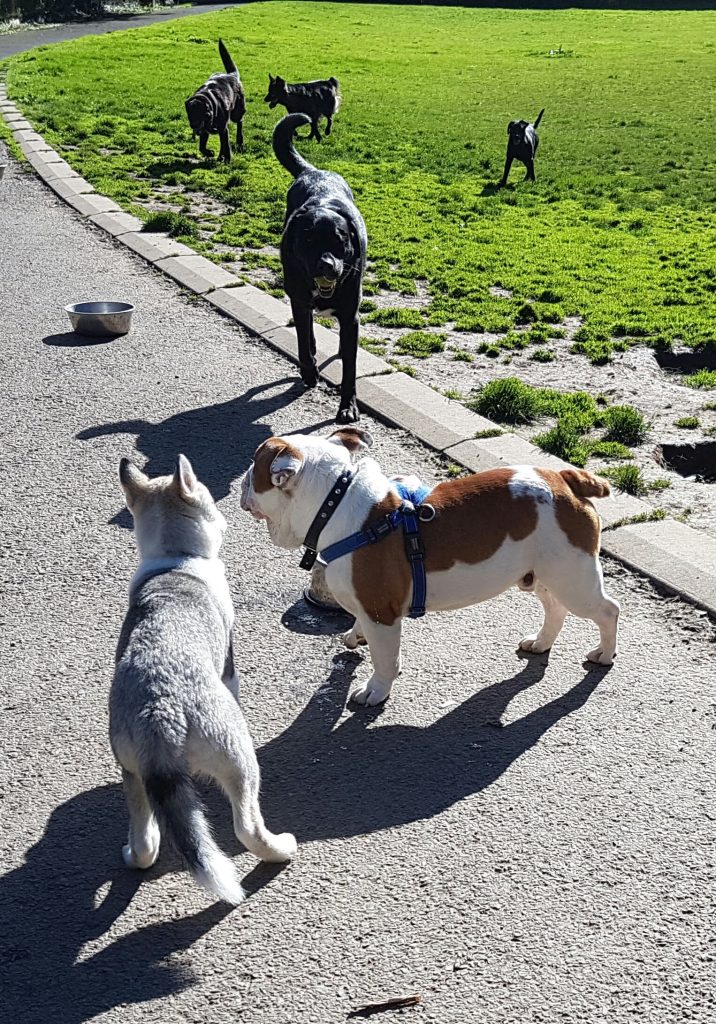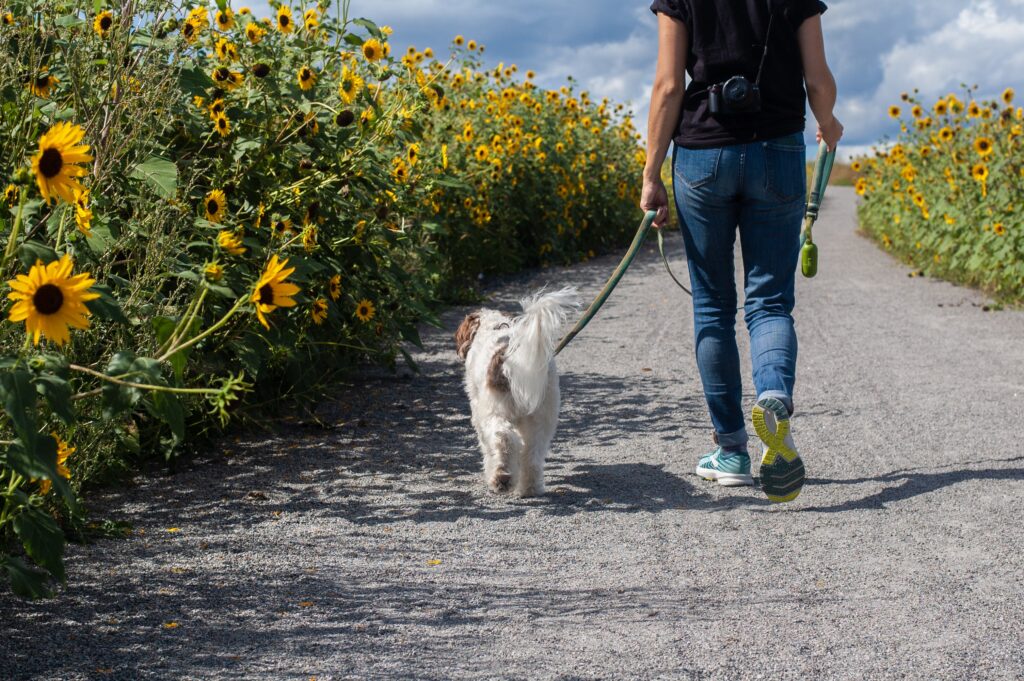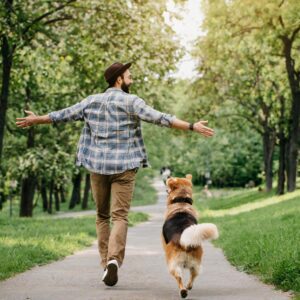Need help with Reactive Dog Behaviour? Join my FREE Facebook support group...
Key Elements of The Perfect Dog Walk
You and your dog may have different ideas of what a perfect walk might look like. For the most well balanced dog, this is what I think a perfect walk will look like! If you can include a bit of everything in your dogs daily walk he’ll be healthier, more confident, and he’ll be happier too!
Before you’ve left the house
As soon as you start getting ready, he’ll already know what’s coming. He knows your routine well and he might start getting excited in anticipation of his walk. As you put your dog walking shoes on, then your coat, then pick up the lead, each step will heighten your dogs excitement. Take some time between each step to calm him down so you’re not trying to walk with a bouncy, excitable dog!
First five minutes!
The first five minutes sets you up for the rest of the walk, so aim for close, calm walking. This should be easier if you’ve already calmed him at home, if not, you’ll be trying to walk a dog that’s still fizzing with energy.
A slow, calm walk settles the mind and body and it’s challenging for him which helps with problem solving skills. If he likes to pull, try games that teach him to release pressure rather than keep pulling, which is more instinctive to him. If you’ve used an extendable lead in the past he’ll associate lead pulling with freedom, so allow extra time to undo this.
To the dog park!
As part of the perfect dog walk, you’ll walk calmly to the park together. If you don’t have a dog park, any safe space will do. Here he will get to make new friends, play with his best buddies, investigate, and explore. This is his free time.
He’ll get his cardio up when he get’s off lead to play, which releases endorphins. This is great for boosting his overall happiness! Play time also teaches cooperation; it allows him to practise hunting and fighting postures in a safe and fun way – essential for overall confidence!
Meeting new dogs is vital for practising his social skills. If your dog get’s out the habit of meeting others, he’ll get rusty! Ideally, he’ll meet at least one new dog every day to keep his skills sharp.
Practising life skills and meeting new dogs is also great for his overall confidence levels. He’ll get a lovely shot of Oxytocin (the love hormone) when he socialises with his friends. If you need help socialising your dog there are some tips here, or get help from a trainer. Being able to socialise with his own kind is a game changer for his mental and physical health.

Investigate something new!
While he’s off lead,make sure to include time to investigate and explore freely. This is great for his overall mental health and allows him to be dog-like. Exploring something new daily is essential for confidence and mental health. And, exploring away from the home allows dogs to blur the edges of their territory, reducing anxiety for territorial dogs.
Play time!
The perfect dog walk should also include some time to play together! Don’t let dogs be the only fun thing in the park. What games can you play together that he loves? Why not bring a brand new toy or object to interact with! This will also fulfil his exploration need!
Problem solving
Every walk needs an element of problem solving. Close walking, without a command, is one way to achieve this. You could also try stopping at kerbs and waiting for your dog to sit, or do some recall training, or something else! Whatever you do, don’t make it too easy! Try not using verbal commands so he has to use his brain to figure out what you want.
Achieving goals and learning new things stimulates the release of dopamine. This is great for boosting confidence and making your dog feel good, so don’t skip the problem solving element of your walks. If you include it regularly, it’ll have a long lasting effect.

Time to Recall
Don’t just call your dog at the end of the walk, or when a trigger comes along that you’d like him to ignore. If you do that, he’ll soon lose interest. In the perfect dog walk, make sure you call him back at least 5 times for no reason, per every proper recall. This way he’ll stay enthusiastic and come when you need him without question.
Improve Your Recall with my 30 Day Programme
This is no time to be stingy with the treats either! Recall is the most important command your dog can learn, it could save his life, so make sure you always have his favourites and plenty of them!
Going home
Just like the start of the walk, it’s time to calm things back down. You’ve had an awesome walk and his brain and body are tired and content. It’s time for a calm, close walk home. It should be easier now as he’s had a lot of fun, played with his friends, seen some new things, so he should be content to walk more calmly.
All the way home!
Keep him on the lead, all the way home, and into the house again. The walk should start and finish in the same place. He’ll remember the end of this walk next time you go out, so doing it slow and calm now will help him start slow and calm next time. If he remembers coming home excited and running ahead to the front door, he’ll be disappointed when his next walk doesn’t start that way!
Enjoy!
Are you struggling with your dogs behaviour?
Private Dog Behaviour Consultations are currently available in the Dundee area and beyond, or via zoom. If you are looking for help solving your dogs behaviour and training problems, then please get in touch!


